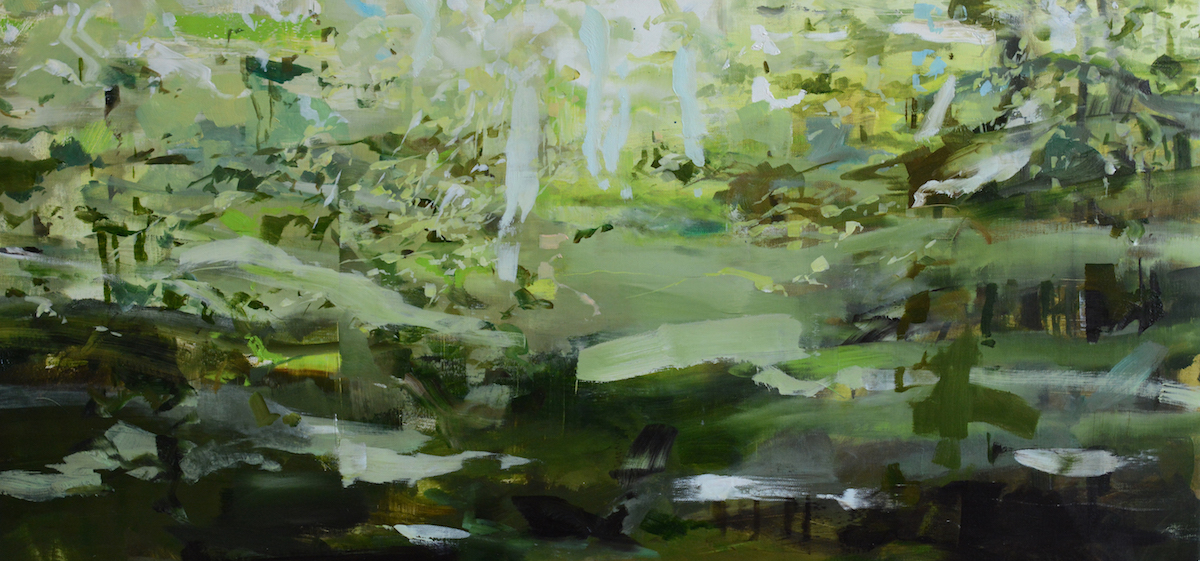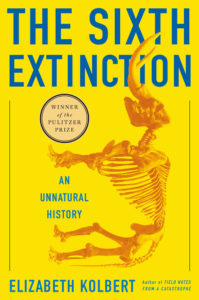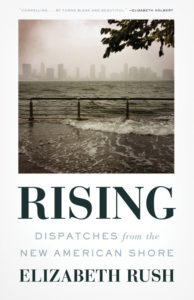The idea of a single day devoted to the earth is absurd. In the 49 years since the first Earth Day was celebrated, human civilization—checked by neither morality nor policy—has wrecked devastation upon the planet, increasing with each passing year of excess and inaction the likelihood that coming generations will live in a world unrecognizable to Senator Gaylord Nelson, who first conceived of the day as an environmental teach-in on April 22, 1970. But if there is any hope in righting this awful course, we need to think of every day as Earth Day.
With that in mind we have come up with the beginnings of a climate change library, 365 books that show us where we’ve come from, where we’re at now, how we might survive this crisis, and how we might cope if we don’t. With contributions from the likes of Richard Powers, Bill McKibben, Rebecca Solnit, Elizabeth Rush, Aminatta Forna, Maja Lunde, Francesca Angiolillo, Stephen Sparks, Amy Brady, Jean-Baptiste del Amo, and many more, this collection is neither exhaustive nor fixed, and with the help of readers and writers alike, we hope to add to it in the coming months (and years, if we can). Divided broadly—and subjectively!—into four sections, we kicked off yesterday with The Classics; today, it’s all about science.
Featured art from Landscape Painting Now, edited by Todd Bradway, courtesy DAP.
__________________________________
 Nathaniel Rich, Losing Earth: A Recent History
Nathaniel Rich, Losing Earth: A Recent History
“Nearly everything we understand about global warming was understood in 1979,” Rich writes in the introduction to this book, an expansion of his iconic New York Magazine takeover. “It was, if anything, better understood. Today, almost nine out of ten Americans do not know that scientists agree, well beyond the threshold of consensus, that human beings have altered the global climate through the indiscriminate burning of fossil fuels.” This book chronicles the human history of climate change—our relationship to it, our resistance to it, and our failure to correct it.
Elizabeth Kolbert, The Sixth Extinction: An Unnatural History
While Kolbert’s first book was about climate change, her second—which won a Pulitzer Prize—is about extinction. She devotes a lot of space at the beginning of the book explaining how the idea of extinction first came about. This is critical because it contextualizes the sixth extinction, which is happening right now because of human activity. She explains how climate change is causing species to shift up in both elevation and latitude, and that species that aren’t mobile are slowly dying out. Other species are out-of-sync with their ecosystem, finding that, for example, the flowers they rely on for sustenance are flowering earlier, so they arrive too late to get enough food. Ocean species are affected by acidification caused by CO2 absorption. Other species—both plant and animal—are succumbing to diseases and pests that are more prevalent in a warming wold (for example, the mountain pine beetle). Some of the scientists Kolbert interviewed estimated that, if all species were able to move with warming (i.e., “universal dispersal”), “with the minimum warming projected, 9 to 13 percent of all species would be “committed to extinction” by 2050. With maximum warming, the numbers would be 21 to 32 percent.” And this is just an estimate.
Elizabeth Rush, Rising: Dispatches from the New American Shore
Rising focuses on a single aspect of climate change: sea level rise. Rush, an environmental journalist and writer, travels to coastal communities around the United States to see how they are faring with sea level rise and increasingly fierce hurricanes that drive salt water further onshore. This is narrative nonfiction at its best. Rush not only explains the science of sea level rise and the ways in which coastlines can be made more resistant to climate change. She also connects personally with people in flood zones, many of them economically or racially marginalized. She intersperses their first-person stories of flooding and disaster with her own reporting, covering the constant “nuisance flooding” in Florida, caused by increasing sea level and low-lying land; and the relocation of a community hit by Hurricane Sandy, who asked for—and received—government help to move further inland and demolish their old homes so that the shoreline would no longer be populated. She also exposes the problems inherent in regulatory programs like the National Flood Insurance Program (NFIP), that “require [those with insurance] to rebuild in place, even when that place has been underwater repeatedly in the past.”
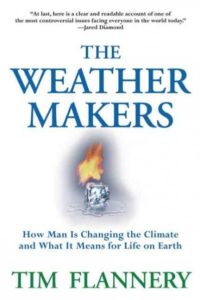 Tim Flannery, The Weather-Makers: How Man Is Changing the Climate and What It Means for Life on Earth
Tim Flannery, The Weather-Makers: How Man Is Changing the Climate and What It Means for Life on Earth
This book, comprised of 36 short essays about climate change and the future of the planet, was an international best-seller and on the front lines of the conversation when it was published in 2005. Apparently, Richard Branson read it and recommended it to Arnold Schwarzenegger, who then signed a bunch of pro-planet legislation in California.
 Jeff Nesbit, This Is the Way the World Ends: How Droughts and Die-Offs, Heat Waves and Hurricanes Are Converging on America
Jeff Nesbit, This Is the Way the World Ends: How Droughts and Die-Offs, Heat Waves and Hurricanes Are Converging on America
Written by the executive director of Climate Nexus, this book offers a clear-eyed look at how different phenomena like hurricanes and wildfires are actually connected to climate change. It also makes clear that climate change isn’t some future event that will only affect people in faraway places. On the contrary, it shows how the effects of climate change are being felt right now and in relatively temperate places like the United States. In addition, Nesbit draws on decades of experience as a professional communications expert to suggest new and more useful ways of discussing climate change as well as strategies for mitigating the worst of it.
–Amy Brady
 Linda Marsa, Fevered: Why a Hotter Planet Will Hurt Our Health—And How We Can Save Ourselves
Linda Marsa, Fevered: Why a Hotter Planet Will Hurt Our Health—And How We Can Save Ourselves
In this book, journalist Marsa focuses on the possible human health impacts of global warming—including increases in asthma, allergies, disease, and heatstroke—and provides a “medical Manhattan Project” for planning a way out.
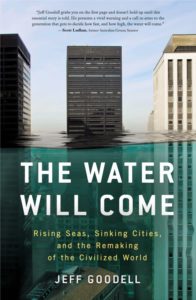 Jeff Goodell, The Water Will Come
Jeff Goodell, The Water Will Come
Jeff Goodell put his decades’ worth of journalistic experience to work to write what might be the most comprehensive book to date on how coastal communities around the world are preparing (or not) for sea-level rise. The access Goodell got while researching this book is incredible. Among the important figures he interviews are NYC mayor Bill de Blasio, the infamous Florida developer Jorge Perez, and former U.S. president Barack Obama.
–Amy Brady
 Peter Brannen, The Ends of the World: Volcanic Apocalypses, Lethal Oceans, and Our Quest to Understand Earth’s Past Mass Extinctions
Peter Brannen, The Ends of the World: Volcanic Apocalypses, Lethal Oceans, and Our Quest to Understand Earth’s Past Mass Extinctions
A guided tour through the five mass extinctions our planet has already endured—broiling! freezing! poison gas! smothering! shot up by asteroids!—and a peek at what the next one might be.
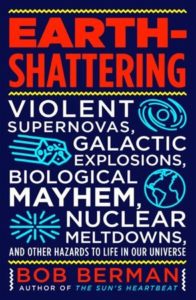
From astronomy writer Berman, an accessible stroll through all the biggest explosions, breakdowns, and cataclysms (and a few non-cataclysms, like Y2K) our universe has seen to date—and the ripple effects that we’re still experiencing. Cool guys might not look at explosions, but they should, because they’re completely fascinating.
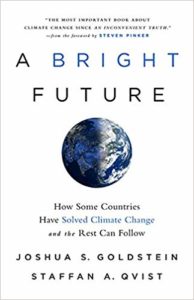 Joshua S. Goldstein and Staffan A. Qvist, A Bright Future: How Some Countries Have Solved Climate Change and the Rest Can Follow
Joshua S. Goldstein and Staffan A. Qvist, A Bright Future: How Some Countries Have Solved Climate Change and the Rest Can Follow
The main thrust of this practical look at dealing with the energy crisis is that we need to try everything available to us, from nuclear to solar to geothermal (spoiler alert: one of those countries is not the United States).
 Gary Paul Nabhan, Cultures of Habitat: On Nature, Culture, and Story
Gary Paul Nabhan, Cultures of Habitat: On Nature, Culture, and Story
In this collection of essays, ethnobiologist, MacArthur fellow, and research scientist at the Arizona Sonora Desert Museum Nabhan investigates the relationship of human occupation to increasing native species endangerment. ”If I could distill what I have learned during a thousand and one nights working as a field biologist,” he writes, ”it would be this: each plant or animal has a story of some unique way of living in this world. By tracking their stories down to their finest detail, our own lives may be informed and enriched.” The stories Nabhan tells are not just of plants and animals, but of the Indigenous peoples who find meaning in them. The two are inherently connected. ”Ultimately, the most potent way of conserving biological diversity,” he writes, ”may be to protect the diversity of the cultures that have stewarded the plant and animal communities on which our agriculture is based.”
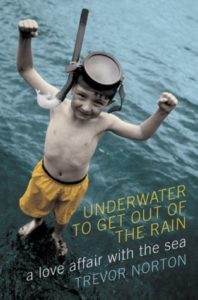 Trevor Norton, Underwater to Get out of the Rain: A Love Affair With the Sea
Trevor Norton, Underwater to Get out of the Rain: A Love Affair With the Sea
Marine biologist Norton’s compelling hybrid of memoir and natural history celebrates the sea—and all its quirks, inhabitants, and mysteries—while also warning against the deleterious effects humans are having on them.
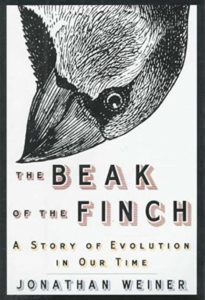 Jonathan Weiner, The Beak of the Finch: A Story of Evolution in Our Time
Jonathan Weiner, The Beak of the Finch: A Story of Evolution in Our Time
This book of evolutionary biology, which focuses on the work of scientists Rosemary and Peter Grant, who spent over 20 years studying Darwin’s finches, won the 1995 Pulitzer Prize for General Non-Fiction.
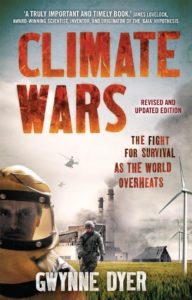 Gwynne Dyer, Climate Wars: The Fight for Survival as the World Overheats
Gwynne Dyer, Climate Wars: The Fight for Survival as the World Overheats
A book that undertakes to predict what will happen—both scientifically and politically—as the world heats up. Ten years on and some of it has come to pass.
 Paul Hawken, Drawdown
Paul Hawken, Drawdown
Paul Hawken is no stranger to the environmental movement. He’s the author of eight books, dozens of articles and op-eds, and has made numerous television appearances. All that experience has led to the development of Project Drawdown, a coalition of scientists, activists, business developers, policy makers, and other experts to determine the most viable ways to slow and even stop global warming. Drawdown is the result of their efforts, containing descriptions of 100 substantive solutions. Each solution is accompanied by real numbers that estimate its total cost and the amount of carbon it would draw down from the atmosphere.
–Amy Brady
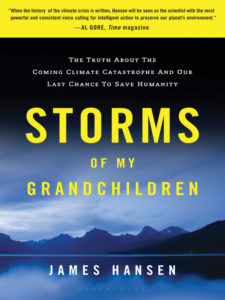 James Hansen, Storms of My Grandchildren
James Hansen, Storms of My Grandchildren
A leading climatologist offers a science-backed warning—but unlike some of the books on this list, there’s a little scrim of hope in there.
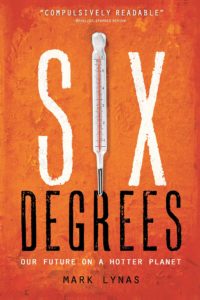 Mark Lynas, Six Degrees: Our Future on a Hotter Planet
Mark Lynas, Six Degrees: Our Future on a Hotter Planet
In which Lynas counts upwards, explaining what the planet will look like with each added degree of heat. It’s not the kind of math you’re going to like.
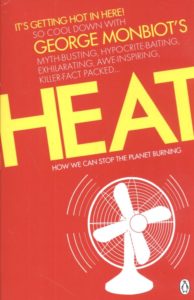 George Monbiot, Heat
George Monbiot, Heat
Monbiot’s 2006 plan to save the planet—effecting a 90 percent reduction in carbon emissions by 2030—probably isn’t going to happen at this point. Not that it ever was. But it’s still heartening to see that we could do something similar, and still live fully modern lives. Though by the time anyone takes any action towards such lives, it will probably be too late. Oh, well.
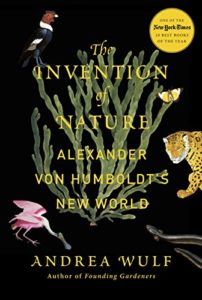 Andrea Wulf, The Invention of Nature
Andrea Wulf, The Invention of Nature
Wulf’s biography of dashing 19th-century naturalist Alexander von Humboldt is both rip-roaring adventure story and intellectual history, and stealthily makes the case for why AVH (a superstar in his time and buddy of Goethe) ought to still be celebrated as the grandfather of the environmental movement.
 M. R. O’Connor, Resurrection Science
M. R. O’Connor, Resurrection Science
A deep dive into the many and often controversial measures taken to protect—and yes, even resurrect—endangered species. But even if no one hunts the great white whale, global warming could still kill it off—so O’Connor argues that in order to truly conserve the creatures of the world, we have to make some grander changes. “Until we make space for other species on earth,” she writes, “it won’t matter how many animals we bring back to the world, there just won’t be any place for them.”
 Naomi Oreskes and Erik M. Conway, Merchants of Doubt
Naomi Oreskes and Erik M. Conway, Merchants of Doubt
A great primer of the #ExxonKnew scandal, which pairs well with Private Empire, below: “Doubt-mongering also works because we think science is about facts—cold, hard, definite facts. If someone tells us that things are uncertain, we think that means that the science is muddled. This is a mistake. There are always uncertainties in any live science, because science is a precess of discovery.”
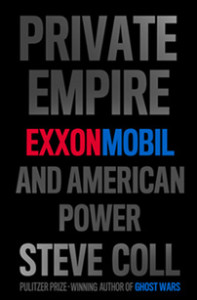 Steve Coll, Private Empire
Steve Coll, Private Empire
A long list of other reasons why Exxon is a very dodgy outfit.
“The ExxonMobil forecast numbers suggested that to make an impact on oil demand, the world’s governments would have to reach a unified conclusion that climate change presented an emergency on the scale of the Second World War—a threat so profound and disruptive as to require massive national investments and taxes designed to change the global energy mix.”
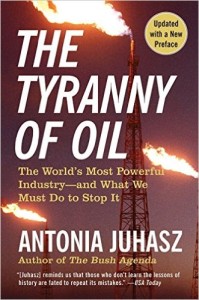 Antonia Juhasz, The Tyranny of Oil
Antonia Juhasz, The Tyranny of Oil
The reporter who’s really covered the most powerful and reckless industry on the planet.
“The masters of the oil industry, the companies known as ‘Big Oil,’ exercise their influence throughout this chain of events: through rapidly and ever-increasing oil and gasoline prices, a lack of viable alternatives, the erosion of democracy, environmental destruction, global warming, violence, and war.”
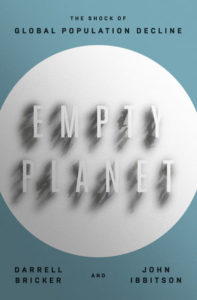 Darrell Bricker and John Ibbitson, Empty Planet: The Shock of Global Population Decline
Darrell Bricker and John Ibbitson, Empty Planet: The Shock of Global Population Decline
We’ve spent decades worrying about overpopulation, but in this volume, a social researcher and journalist propose that the real danger is just the opposite: that the next decade will see a significant dip in human population. Written by Canadians—this comes up.
 Spencer Weart, The Discovery of Global Warming
Spencer Weart, The Discovery of Global Warming
The story of how an international panel came together in 2001 and announced the truth of climate change—now updated with more information about what happened next.
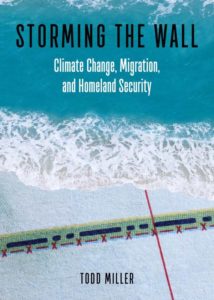 Todd Miller, Storming the Wall: Climate Change, Migration, and Homeland Security
Todd Miller, Storming the Wall: Climate Change, Migration, and Homeland Security
Climate change is now the #1 security threat to the United States, and is already contributing to massive displacement problems—to the tune of 21.5 million people a year. Yes, already. In this book, Miller tells the stories of these displaced people, as well as the story of climate change as it is affecting—and will affect—our borders and, just as importantly, the basic sustainability of the human race.
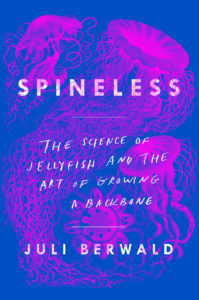 Juli Berwald, Spineless: The Science of the Jellyfish and the Art of Growing a Backbone
Juli Berwald, Spineless: The Science of the Jellyfish and the Art of Growing a Backbone
Juli Berwald, in her new memoir Spineless, shows how nature’s creatures—in this case, jellyfish—can provide information about our messed-up ecosystems, our persecuted environment, our overdeveloped landscapes, and the human condition. Maybe the jellyfish, rather than the bald eagle, should be our new national symbol, a harbinger of our own human failings.
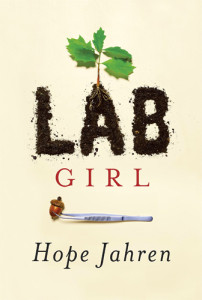 Hope Jahren, Lab Girl
Hope Jahren, Lab Girl
Why not luxuriate in this wonderful memoir, about plants and one woman who loves them, while there are still plants (and women!) to love?
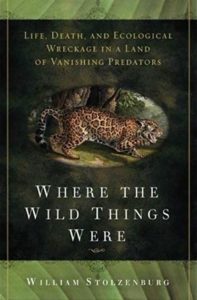 William Stolzenburg, Where the Wild Things Were
William Stolzenburg, Where the Wild Things Were
Finally, an advocate for the carnivores. In this book, wildlife journalist Stolzenburg illuminates what happens when large predators—from wolves to sea otters—are removed from ecological systems, and makes an eloquent case for the need for balance in the natural world.
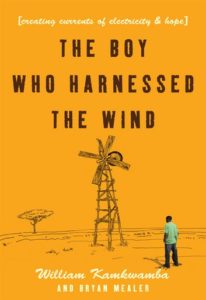 William Kamkwamba and Brian Mealer, The Boy Who Harnessed the Wind
William Kamkwamba and Brian Mealer, The Boy Who Harnessed the Wind
The remarkable autobiography of Kamkwamba, who dreamed of windmills as a boy in drought-ridden Malawi—and built one, changing the lives of everyone around him. A rare feel-good story on a list like this.
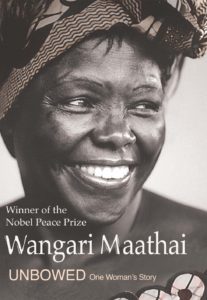 Wangari Maathai, Unbowed
Wangari Maathai, Unbowed
A memoir from the winner of the Nobel Peace Prize, Wangari Maathai, who founded the Green Belt Movement in 1977, a grassroots organization that she used to empower women, protect the environment, and work on sustainable development projects without the help of the Kenyan government. An exceptional book by an exceptional woman.
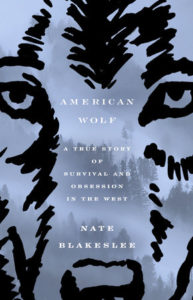 Nate Blakeslee, American Wolf
Nate Blakeslee, American Wolf
The story of the way wolves have shaped the natural world—both before the rise of man and after—and the shorter story of one particular wolf, O-Six, an alpha female who ruled Yellowstone. Beloved by some, hated and feared by others, used for profit by even more, she was emblematic of an ongoing culture clash in the American West: between conservationists and those who would strip it bare. Read an excerpt here.
 Robert Macfarlane, The Wild Places
Robert Macfarlane, The Wild Places
The international bestseller from one of our foremost nature writers, which Bill McKibben described as an “eloquent (and compulsively readable) reminder that, though we’re laying waste the world, nature still holds sway over much of the earth’s surface.”
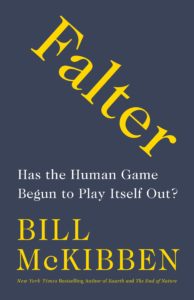 Bill McKibben, Falter
Bill McKibben, Falter
The founder of 350.org is back with a book about all the things that will end “the human game:” climate change, artificial intelligence, and the development of in-utero gene manipulation. Falter connects all of these problems to the mid-twentieth century rise of Ayn Rand’s conservative ideology, but argues that there’s still time to change our ways. This is perhaps the author’s most urgent and moving book since The End of Nature.
–Amy Brady
 Earl Swift, Chesapeake Requiem: A Year with the Watermen of Vanishing Tangier Island
Earl Swift, Chesapeake Requiem: A Year with the Watermen of Vanishing Tangier Island
Many Americans still think of climate change as something that will affect other people—people far away from their shores. But in reality, it’s already affecting the U.S. In Chesapeake Requiem journalist Earl Swift visits one of America’s most impacted places—Tangier Island, a tiny knob of land in the Chesapeake Bay. By most predictions, Tangier has less than 50 years left before it will vanish completely into the sea. This book is Swift’s elegy to the island, its people, and their disappearing ways of life.
–Amy Brady
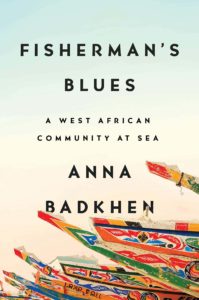 Anna Badkhen, Fisherman’s Blues: A West African Community at Sea
Anna Badkhen, Fisherman’s Blues: A West African Community at Sea
With the lyricism of a poet and the clear-eyed observation of a top journalist, Badkhen captures the lives of Senegal’s fishermen—their methods, their friendships, their loves, their worries. As climate change and international fishing conglomerates continue to empty the sea of fish, Senegal’s fishing industry and its fishermen’s very way of life are threatened. Fisherman’s Blues follows the fishing community’s response to these threats and reveals just how little power they have over the outside forces shaping their lives. It’s a deeply moving book that lingers long after its read.
–Amy Brady
 Mark C. Serreze, Brave New Arctic: The Untold Story of the Melting North
Mark C. Serreze, Brave New Arctic: The Untold Story of the Melting North
A compelling combination of personal narrative and careful scientific explanation of how the Arctic ice is shrinking—and what the fallout from that will be—from the director of the National Snow and Ice Data Center.
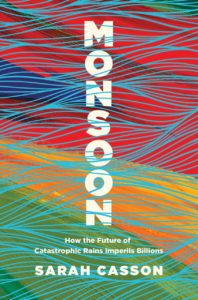 Sarah Casson, Monsoon: How the Future of Catastrophic Rains Imperils Billions
Sarah Casson, Monsoon: How the Future of Catastrophic Rains Imperils Billions
Casson argues that the most devastating threat of climate change won’t be the rise of sea levels but rather the fall of rain—and not just any rain, but monsoons, enormous storms that already have a massive impact on life around the world. Luckily, there may be actually things we can actually do to affect them—if we can understand them first.
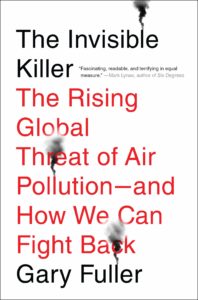 Gary Fuller, The Invisible Killer: The Rising Global Threat of Air Pollution, and How We Can Fight Back
Gary Fuller, The Invisible Killer: The Rising Global Threat of Air Pollution, and How We Can Fight Back
Air pollution has been an issue since the 17th century, but it’s easy to forget about it, since most of us can’t feel or see it on a daily basis. Fuller argues that we can’t forget—in this book, he tells the stories of the scientists and researchers who have paved the way towards our understanding of pollution, shows its effects, and makes a passionate case for fighting back.
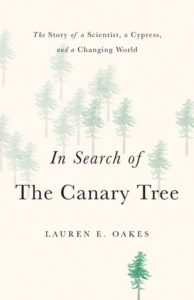 Lauren E. Oakes, In Search of the Canary Tree: The Story of a Scientist, a Cypress, and a Changing World
Lauren E. Oakes, In Search of the Canary Tree: The Story of a Scientist, a Cypress, and a Changing World
In which ecologist Oakes tells the story of the Alaskan yellow-cedar, both from an environmental perspective and a social one, doing field research in the forests as well as conducting many interviews with local Alaskans. What happens—scientifically? emotionally?—when these trees disappear?
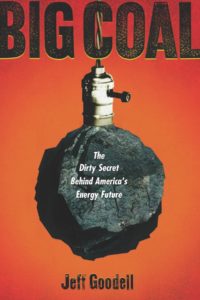 Jeff Goodell, Big Coal
Jeff Goodell, Big Coal
A 2006 argument against coal. Obviously we haven’t listened well enough.
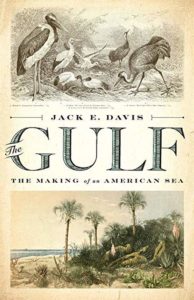 Jack E. Davis, The Gulf: The Making of An American Sea
Jack E. Davis, The Gulf: The Making of An American Sea
An epic and essential environmental history of the Gulf of Mexico, Earth’s 10th-largest body of water and one of its most diverse aquatic ecosystems, which won the Pulitzer Prize for history in 2018.
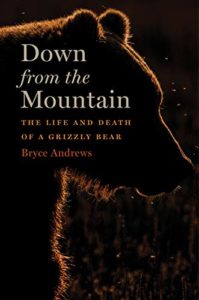 Bryce Andrews, Down from the Mountain: The Life and Death of a Grizzly Bear
Bryce Andrews, Down from the Mountain: The Life and Death of a Grizzly Bear
A clear-eyed story of humans and bears from Montana-based conservationist Andrews, and one of our favorite recent works of environmental writing. Read an excerpt here.
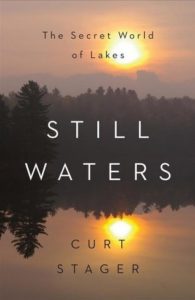 Curt Stager, Still Waters: The Secret World of Lakes
Curt Stager, Still Waters: The Secret World of Lakes
“There is nothing like a lake to reflect and reveal the world,” Stager writes. If you thought lakes were inessential to the overall ecology of our planet, think again.
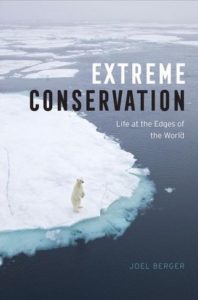 Joel Berger, Extreme Conservation: Life at the Edges of the World
Joel Berger, Extreme Conservation: Life at the Edges of the World
In this volume, Berger chases the animals that live in some of the most extreme locations on earth, from the Tibetan Plateau to the Arctic tundra to the Gobi desert, marking how climate change effects their lives, and musing on what we might be able to do about it. A rugged a guide as you are likely to find.
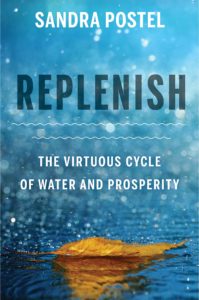
Sandra Postel, Replenish: The Virtuous Cycle of Water and Prosperity
If you can get past the title of this book (the terms “virtuous” and “prosperity” kind of threw me), it’s an excellent read. Postel, a former Freshwater Fellow of the National Geographic Society and director of the Global Water Policy Project, takes a global look at several aspects of the hydrologic cycle (surface water, groundwater, soil water) and the ways in which water is used (irrigation, human consumption, etc.). She balances much of the negative news about our water resources with stories about people who are doing things differently and have created cross-disciplinary community groups to manage water more sustainably. Each chapter takes on a key issue and then provides an example of what’s being done to address it. In the last chapter of the book, however, Postel notes that the kind of freshwater stewardship she has been describing must yield results, and so far it hasn’t. “At best, it’s one step forward, two steps back. But here and there, we’re making progress.”
 David Wallace-Wells, The Uninhabitable Earth
David Wallace-Wells, The Uninhabitable Earth
When Wallace-Wells published “The Uninhabitable Earth,” his terrifying 2017 article in New York Magazine about climate change’s worst-case scenarios, he was called an “alarmist” by some of the scientists he cited. Two years later, he’s expanded that essay into a book and some of those same scientists are appearing alongside him on television to say just how right he is. This deeply upsetting book is not for the lighthearted. But neither is climate change.
–Amy Brady
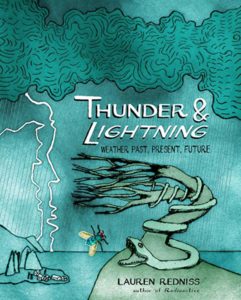 Lauren Redniss, Thunder & Lightning
Lauren Redniss, Thunder & Lightning
This magical book has the peculiar glow of an illuminated manuscript and the scientific accuracy of a New Yorker essay. To read it is to enter the side-winding, human-driven story of what weather is and how we’ve fought with it, tried to control it, sometimes getting destroyed by its sudden vicissitudes. Redniss is an illustrator in the vain of Joe Sacco, her explanatory genius occasionally disguises—for a split second—what an extraordinary artist she is, the range she possesses, from portraits to the panorama of the sky itself. What a variety of landscapes this book possesses too: from deserts to the jungles of Vietnam, to the area around New Orleans after Hurricane Katrina. She brings it all to life, always capturing the fate of people who are living on the knife’s edge of brutal shifts in what was once a temperate topic of conversation. That you will also depart this book with a sophisticated understanding of high pressure systems and so much else shows what a breakthrough in science writing Redniss’s work has been.
–John Freeman
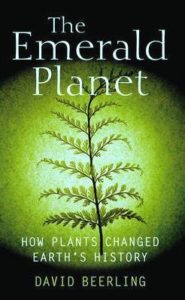 David Beerling, The Emerald Planet: How Plants Changed Earth’s History
David Beerling, The Emerald Planet: How Plants Changed Earth’s History
A palaeoclimatology professor’s argument for the importance of plants to Earth’s history—and future.
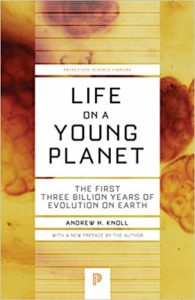 Andrew H. Knoll, Life on a Young Planet
Andrew H. Knoll, Life on a Young Planet
In order to understand the future of our planet, we need to understand its history. Decorated Harvard paleontologist Knoll has a theory, and though it may not be the flashiest, it’s probably one of the best. “The absence of a definitive punch line may disappoint some readers,” he writes, “but as a paleontologist, it is why I get up in the morning. For scientists, unanswered questions are like Everest unclimbed, an irresistible lure for restless minds.”
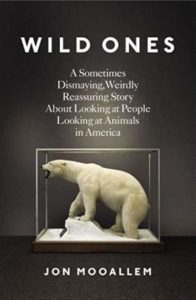 Jon Mooallem, Wild Ones
Jon Mooallem, Wild Ones
The cheeky subtitle for this book is “A sometimes dismaying, weirdly reassuring story about looking at people looking at animals in America.” Which is pretty apt for a social history of animal appreciation, conservation, and of course—desecration.
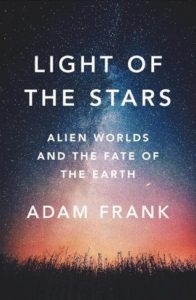 Adam Frank, Light of the Stars
Adam Frank, Light of the Stars
In an unusual move, Frank approaches climate change on earth from an astrophysical perspective, arguing that the likelihood that other planets—Mars, for example—were once inhabitable should really get us off our butts and make us try to change things around here. In order to avoid ending up like Mars, we need to remember that humanity and the earth are part of the same ecosystem—even the same organism.
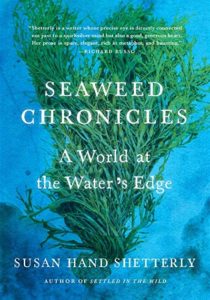 Susan Hand Shetterly, Seaweed Chronicles
Susan Hand Shetterly, Seaweed Chronicles
For more people than you’d suspect, seaweed offers a lot of potential for sustainable existence on this planet; find out more in this essential book about an essential plant.
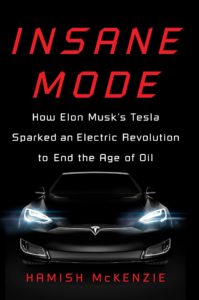 Hamish McKenzie, Insane Mode
Hamish McKenzie, Insane Mode
Interpret it as a business book about overcoming the odds, or as an introduction to the alternative energy revolution in the works, or a portrait of a fascinating, strange person, or a wicked cool book about cars—or all of these.
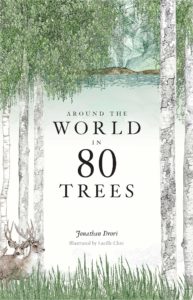 Jonathan Drori, Around the World in 80 Trees
Jonathan Drori, Around the World in 80 Trees
Brief stories about—you guessed it—80 different varieties of tree. Some of the stories are joyful, some strange, some sad, but taken together, they illuminate the sneakily large part trees have to play in human life.
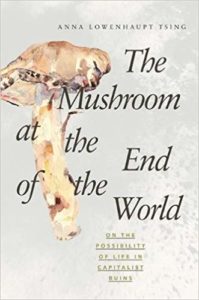 Anna Tsing, The Mushroom at the End of the World
Anna Tsing, The Mushroom at the End of the World
Could a wild mushroom save society? Maybe—if we’re talking about the matsutake, a rare mushroom, and the first thing to grow out of the ruined ground of Hiroshima. “We are stuck with the problem of living despite economic and ecological ruination,” Tsing writes. “Neither tales of progress nor of ruin tell us how to think about collaborative survival. It is time to pay attention to mushroom picking. Not that this will save us—but it might open our imaginations.”
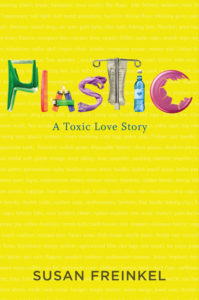 Susan Freinkel, Plastic: A Toxic Love Story
Susan Freinkel, Plastic: A Toxic Love Story
You know what’s probably going to last forever? Nope, it’s not our planet. It’s plastic, a material that has done us a lot of good—and a lot of harm. Freinkel explores our love/hate relationship with the stuff in this book.
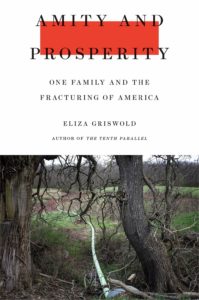 Eliza Griswold, Amity and Prosperity
Eliza Griswold, Amity and Prosperity
The winner of the 2019 Pulitzer Prize in General Nonfiction tells the story of corporate fracking through the experiences of one family in Amity, Pennsylvania.
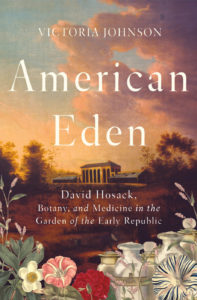 Victoria Johnson, American Eden: David Hosack, Botany, and Medicine in the Garden of the Early Republic
Victoria Johnson, American Eden: David Hosack, Botany, and Medicine in the Garden of the Early Republic
The previously untold story of Alexander Hamilton’s personal physician, who built America’s first botanical garden (now buried under Rockefeller Center).
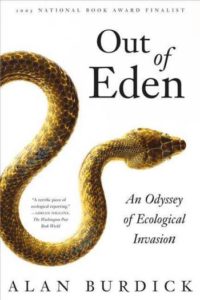 Alan Burdick, Out of Eden: An Odyssey of Ecological Invasion
Alan Burdick, Out of Eden: An Odyssey of Ecological Invasion
“The greatest threat to biological diversity is no longer just bulldozers or pesticides but, in a sense, nature itself,” Burdick writes. This is because animals—and plants—have learned to travel, and are cropping up in all sorts of new environments, fighting for prominence and homogenizing the world. Burdick tells the story of our changing world, and his own story, in this engaging book.
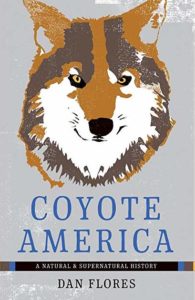 Dan Flores, Coyote America
Dan Flores, Coyote America
A five-million-year biography of that epic trickster, the coyote, in America.
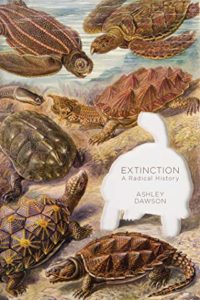 Ashley Dawson, Extinction
Ashley Dawson, Extinction
Humanity has caused “a massive decimation of global biodiversity,” Dawson argues in this book about extinction, its causes, and possible paths towards stemming its relentless flow. “In order to respond adequately to this planetary crisis, we need to transgress the boundaries that tend to keep science, environmentalism, and radical politics separate. Indeed, extinction cannot be understood in isolation from a critique of capitalism and imperialism.”
 David Quammen, The Song of the Dodo
David Quammen, The Song of the Dodo
An in-depth study of island biogeography—islands being unique hotspots for evolution—from one of the best science writers in the business.
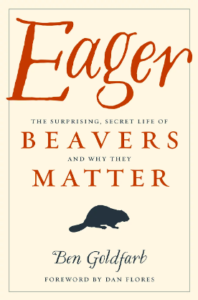 Ben Goldfarb, Eager: The Surprising Life of Beavers and Why They Matter
Ben Goldfarb, Eager: The Surprising Life of Beavers and Why They Matter
Turns out everything we know about a humming ecosystem is wrong—or at least that it could always be improved by beavers.
 Peter Wadhams, A Farewell to Ice: A Report from the Arctic
Peter Wadhams, A Farewell to Ice: A Report from the Arctic
A professor of ocean physics at Cambridge University explains the effect of climate change on the Arctic—and everywhere else.
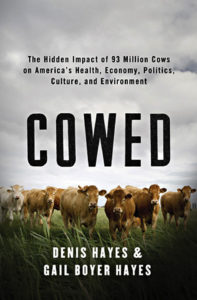 Denis Hayes, Gail Boyer Hayes, Cowed: The Hidden Impact of 93 Million Cows on America’s Health, Economy, Politics, Culture, and Environment
Denis Hayes, Gail Boyer Hayes, Cowed: The Hidden Impact of 93 Million Cows on America’s Health, Economy, Politics, Culture, and Environment
An in depth explanation of America’s relationship with cows—which is deeper, and more dangerous, than you think.
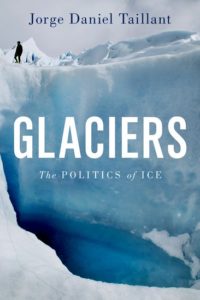 Jorge Daniel Taillant, Glaciers: The Politics of Ice
Jorge Daniel Taillant, Glaciers: The Politics of Ice
An investigation of the cryosphere from a scientific, cultural, and political standpoint, and one which seeks to demystify one of earth’s biggest (and often ignored) assets.
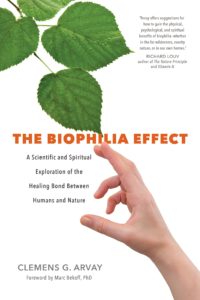 Clemens G. Arvay, tr. Victoria Goodrich Graham, The Biophilia Effect
Clemens G. Arvay, tr. Victoria Goodrich Graham, The Biophilia Effect
A scientific explanation of the way nature can—actually!—physically heal us.
 David Goodrich, A Hole in the Wind: A Climate Scientist’s Bicycle Journey Across the United States
David Goodrich, A Hole in the Wind: A Climate Scientist’s Bicycle Journey Across the United States
To write this book, Goodrich, onetime director of the U.N. Global Climate Observing System in Geneva and head of the National Oceanic and Atmospheric Administration’s Climate Observations and Monitoring Program, cycled 4,200 miles around the country, talking about the climate with scientists and citizens. A compelling personal and scientific narrative.
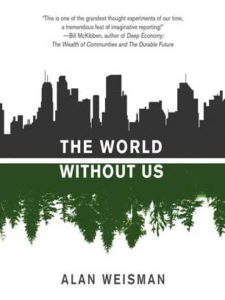 Alan Weisman, The World Without Us
Alan Weisman, The World Without Us
A fascinating thought experiment: what would happen if every human on earth instantly disappeared?
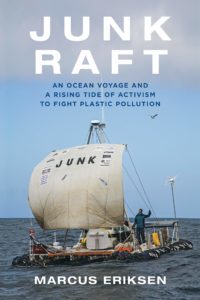 Marcus Eriksen, Junk Raft
Marcus Eriksen, Junk Raft
In which Eriksen takes to the sea in a junk raft of his own creation, traveling from Los Angeles to Hawaii in an act of activism against throw-away culture and the tons and tons of plastic that threaten to overwhelm our planet.
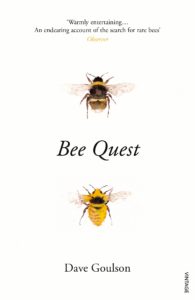
Dave Goulson, Bee Quest
An endearing narrative of the lives and histories of the world’s bees, and Goulson’s quest to find them. You’ll leave with a full understand of the importance of bees to the natural order of things—and probably a pretty big soft spot for them.
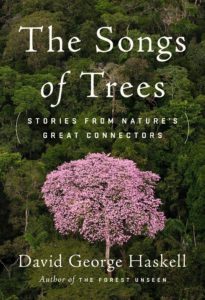 David George Haskell, The Songs of Trees
David George Haskell, The Songs of Trees
“Living memories of trees, manifest in their songs, tell of life’s community, a net of relations,” writes Haskell in the preface to this award-winning, lyrical book. “We humans belong within this conversation, as blood kin and incarnate members. To listen is therefore to hear our voices and those of our family. . . there is no “nature” or “environment” separate and apart from humans.” This book documents some of the trees’ songs, and much of our relationship to them.
 Andreas Malm, Fossil Capital
Andreas Malm, Fossil Capital
The story of how we got here, with our burning planet and our continued reliance on coal, beginning with the rise of steam power in England—itself a function of capitalist practices. Shocker.
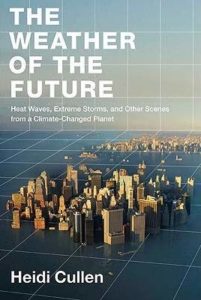 Heidi Cullen, The Weather of the Future: Heat Waves, Extreme Storms, and Other Scenes from a Climate-Changed Planet
Heidi Cullen, The Weather of the Future: Heat Waves, Extreme Storms, and Other Scenes from a Climate-Changed Planet
At the beginning of this 2010 volume, climatologist Cullen quotes Mark Twain: “It’s better to build dams than to wait for the flood to come to its senses.” She goes on to explain what kind of weather we can expect in 2050 if our current habits go unchecked. It’s not great.
 Rick Shine, Cane Toad Wars
Rick Shine, Cane Toad Wars
A book about one of the best and funniest environmental-meddling stories of all time: when the Australian government imported 101 Cane Toads to try to combat the insects snacking on the country’s sugar cane fields . . . and the toads took over the country.
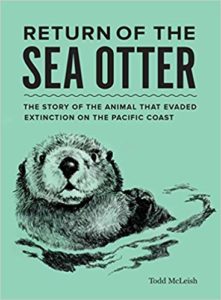 Todd McLeish, Return of the Sea Otter
Todd McLeish, Return of the Sea Otter
For something a tad cheerier, try this chronicle of scientist McLeish’s trip along the Pacific Coast, communing with (and, you know, studying) the sea otters—a species that nearly went extinct 100 years ago, but is slowly beginning to bounce back.
 David Archer and Raymond Pierrehumbert, eds., The Warming Papers
David Archer and Raymond Pierrehumbert, eds., The Warming Papers
A collection of the essential scientific papers that comprise the foundation of our current understanding of climate change.
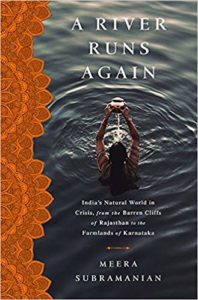 Meera Subramanian, A River Runs Again: India’s Natural World in Crisis, from the Barren Cliffs of Rajasthan to the Farmlands of Karnataka
Meera Subramanian, A River Runs Again: India’s Natural World in Crisis, from the Barren Cliffs of Rajasthan to the Farmlands of Karnataka
In this book, Subramanian investigates the environmental and social problems facing India, and meets the people, from scientists to teachers, trying to fix them.
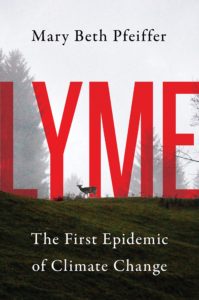 Mary Beth Pfeiffer, Lyme: The First Epidemic of Climate Change
Mary Beth Pfeiffer, Lyme: The First Epidemic of Climate Change
One of the scariest consequences of climate change is the spread of disease, as new temperatures allow carriers to live in new places with unprepared humans. Lyme is the first epidemic that can be traced back to global warming, and as a particularly difficult disease to diagnose and treat, the results are heartbreaking.
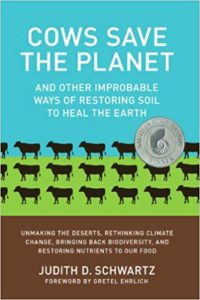 Judith D. Schwartz, Cows Save the Planet: And Other Improbable Ways of Restoring Soil to Heal the Earth
Judith D. Schwartz, Cows Save the Planet: And Other Improbable Ways of Restoring Soil to Heal the Earth
The title has cows in it, but this book is really about soil, and its many effects on our environmental, economic, and social systems. It’s a call to action, a call to understanding, and a call to creativity in the quest to save our world.
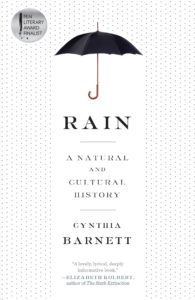 Cynthia Barnett, Rain: A Natural and Cultural History
Cynthia Barnett, Rain: A Natural and Cultural History
From the original rains that built the oceans four billion years ago to the future of rains that climate change will bring, from prayers to raincoats, Thomas Jefferson to Kurt Cobain: a history of rain.
 Richard Mabey, The Cabaret of Plants: Forty Thousand Years of Plant Life and the Human Imagination
Richard Mabey, The Cabaret of Plants: Forty Thousand Years of Plant Life and the Human Imagination
An unsentimental look at the history of human-plant relations, with a special focus on writers, scientists, and artists, from prolific naturalist Mabey.
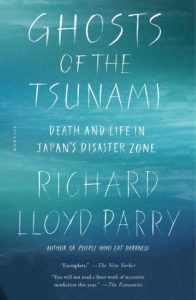 Richard Lloyd Parry, Ghosts of the Tsunami
Richard Lloyd Parry, Ghosts of the Tsunami
A book about the devastating fallout of the Tohoku earthquake of 2011 by the Tokyo bureau chief of the Times of London, who lived through the quake and spent six years reporting in its wake.
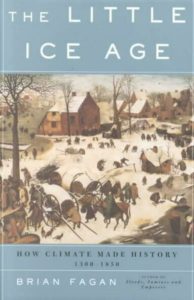 Brian M. Fagan, The Little Ice Age
Brian M. Fagan, The Little Ice Age
The story of the 500-year cold snap that began in the 14th century, how it affected historical events for centuries (for both good and ill), and how its reverberations affect our lives today.
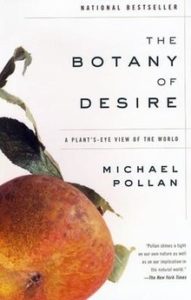 Michael Pollan, The Botany of Desire
Michael Pollan, The Botany of Desire
An early work by Pollan, which unpacks the reciprocal and deeply entwined relationship between people and plants.
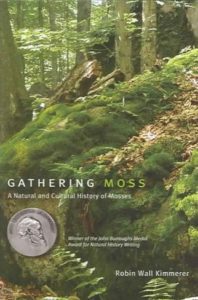 Robin Wall Kimmerer, Gathering Moss: A Natural and Cultural History of Mosses
Robin Wall Kimmerer, Gathering Moss: A Natural and Cultural History of Mosses
“Learning to see mosses is more like listening than looking,” naturalist Kimmerer writes.
A cursory glance will not do it. Starting to hear a faraway voice or catch a nuance in the quiet subtext of a conversation requires attentiveness, a filtering of all the noise, to catch the music. Mosses are not elevator music; they are the intertwined threads of a Beethoven quartet. . . Knowing the fractal geometry of an individual snowflake makes the winter landscape even more of a marvel. Knowing the mosses enriches our knowing of the world.
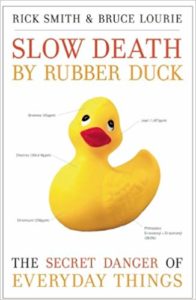 Rick Smith and Bruce Lourie, Slow Death by Rubber Duck: The Secret Danger of Everyday Things
Rick Smith and Bruce Lourie, Slow Death by Rubber Duck: The Secret Danger of Everyday Things
A terrifying, well-researched explanation of how all the chemicals in everyday things—from toys to toothpastes—are secretly killing us.
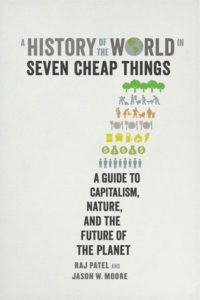 Raj Patel and Jason Moore, A History of the World in Seven Cheap Things
Raj Patel and Jason Moore, A History of the World in Seven Cheap Things
Nature, money, work, care, food, energy, and lives: a history of the things whose cheapening has built, and will destroy, the planet.
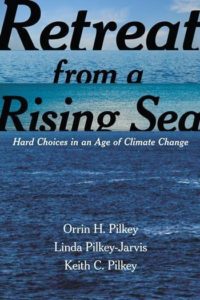 Keith C. Pilkey, Linda Pilkey-Jarvis, and Orrin H. Pilkey, Retreat from a Rising Sea
Keith C. Pilkey, Linda Pilkey-Jarvis, and Orrin H. Pilkey, Retreat from a Rising Sea
A policy-oriented look at at the future of coastal cities—and more importantly, the people who currently live there.
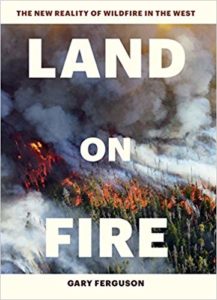 Gary Ferguson, Land on Fire
Gary Ferguson, Land on Fire
Need proof of climate change? Consider wildfire season in the west, which gets longer and hotter with every year. This book takes both a scientific and social view of the problem, and profiles those searching for a solution.
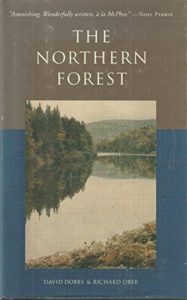 David Dobbs and Richard Ober, The Northern Forest
David Dobbs and Richard Ober, The Northern Forest
Generalized discussion of the effects of climate change are at best overwhelming, at worst paralytically bleak. So without minimizing the totality of the problem, it’s always useful to take in localized cautionary tales, like Dobbs and Ober’s history of the Northern Forest (referring here to the woods stretching from the Connecticut-Massachusetts border all the way up to Canada). A case study in the devastation of extractive capitalism, The Northern Forest measures human and environmental cost alike within a rapacious system of corporate consolidation and resource mismanagement. Wait, that’s bleak.
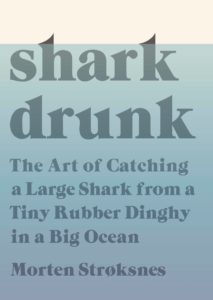 Morten A Strøksnes, Shark Drunk: The Art of Catching a Large Shark from a Tiny Rubber Dinghy in a Big Ocean
Morten A Strøksnes, Shark Drunk: The Art of Catching a Large Shark from a Tiny Rubber Dinghy in a Big Ocean
Two men alone in a small boat outside the coast of Lofoten, are determined to catch the elusive Greenland shark, a monster fish that lives only in very deep waters. This highly acclaimed non fiction is an exciting adventure about catching an enormous fish, but also an attempt to understand all aspects of the ocean; historical, ecological, mythological and poetical. After joining this very special fishing trip, the reader will never look at the big blue in quite the same way again.
–Maja Lunde
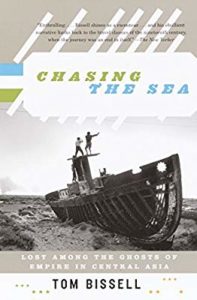 Tom Bissell, Chasing the Sea
Tom Bissell, Chasing the Sea
Bissell’s first book is a captivating travelogue about the rapid deterioration of the Aral Sea, which used to be the fourth largest lake in the world and located between Kazakhstan and Uzbekistan, but is now not a single lake at all, but four smaller ones.

